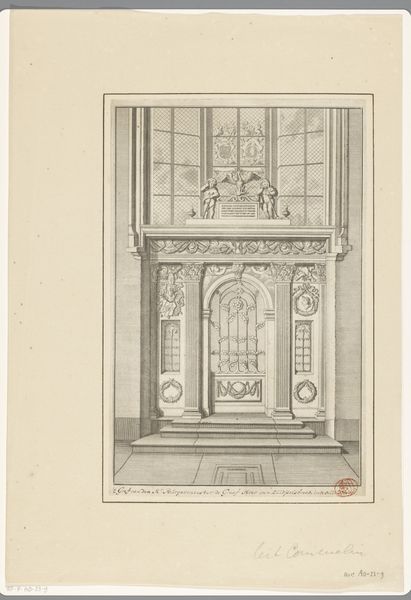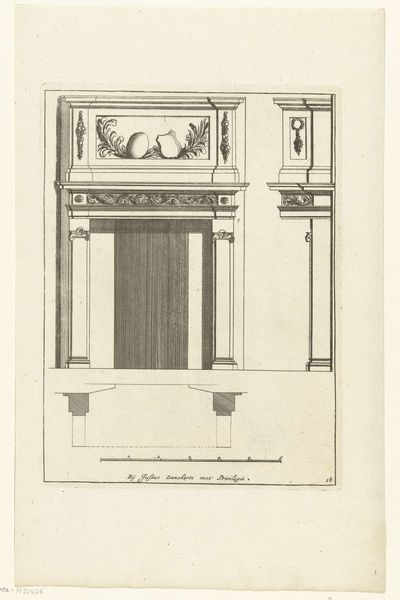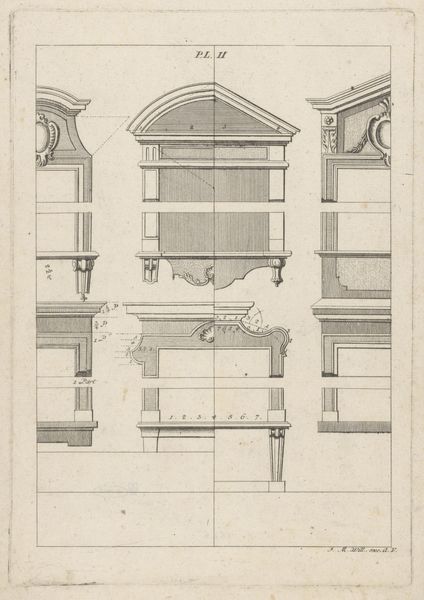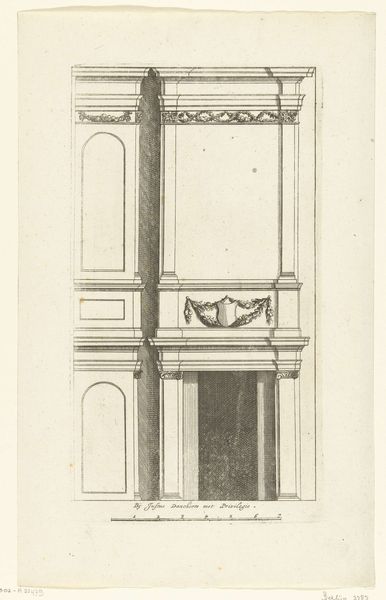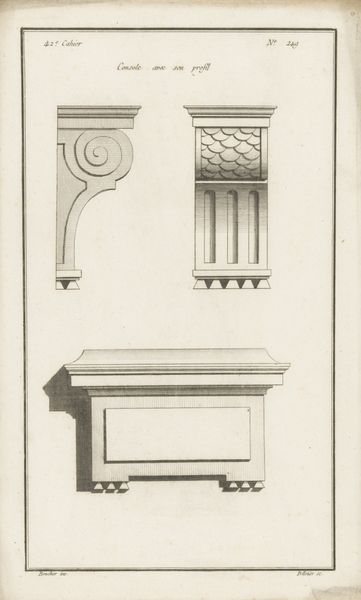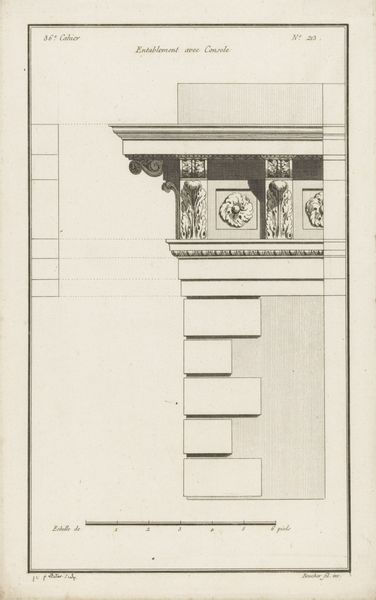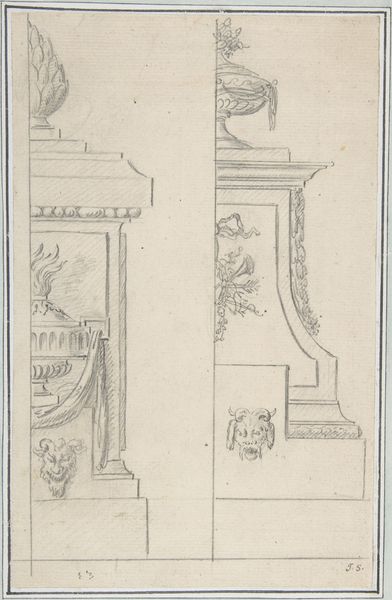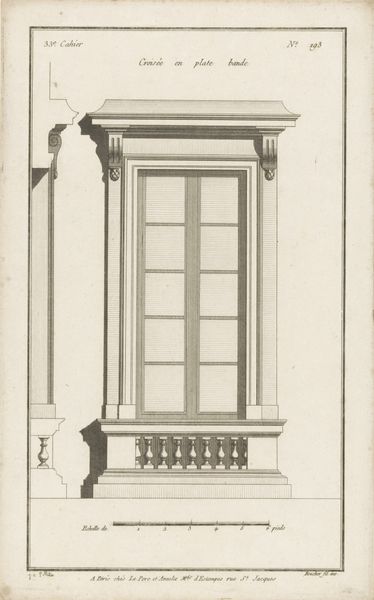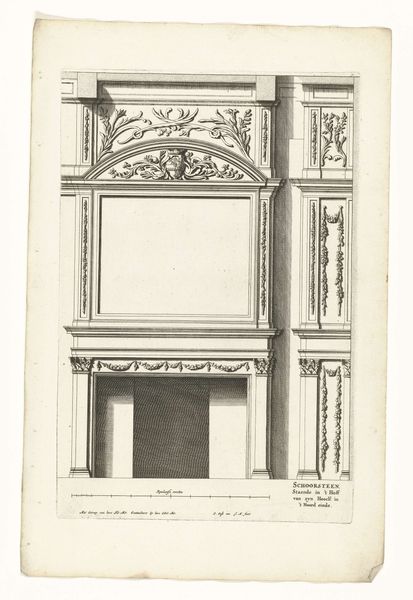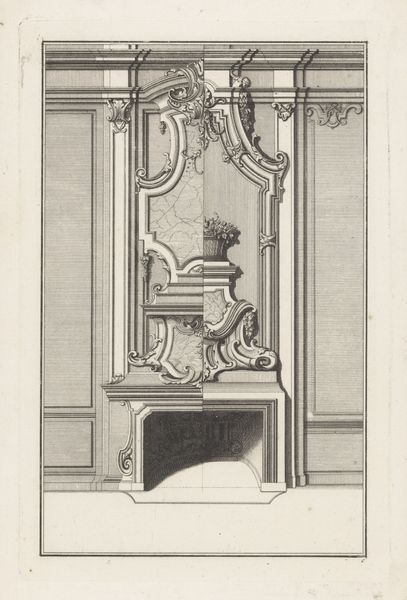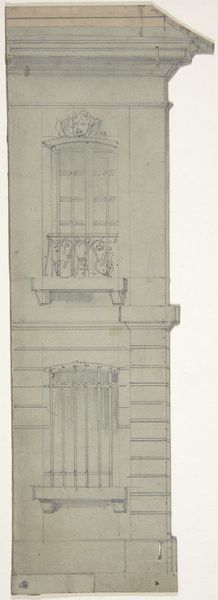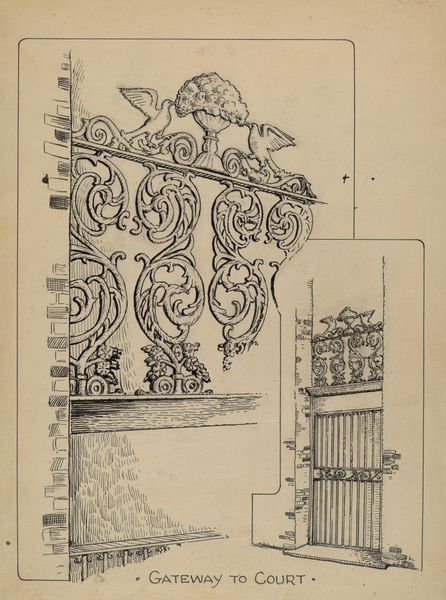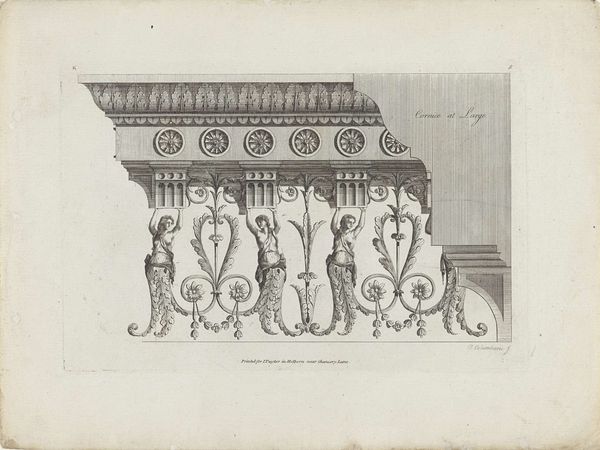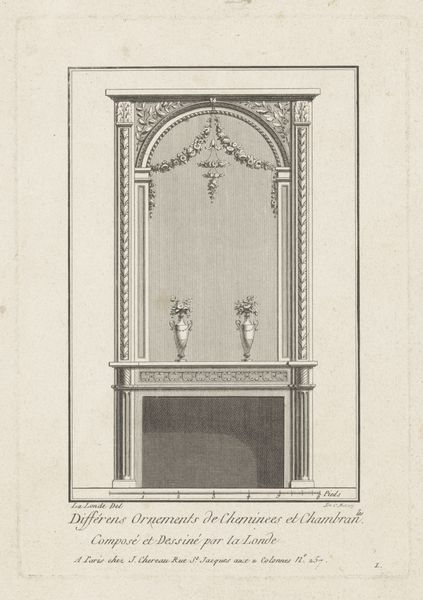
print, etching, engraving, architecture
#
neoclacissism
# print
#
etching
#
old engraving style
#
classical-realism
#
etching
#
geometric
#
line
#
architecture drawing
#
decorative-art
#
engraving
#
architecture
Dimensions: height 295 mm, width 198 mm
Copyright: Rijks Museum: Open Domain
Curator: Let’s turn our attention to "Traphek en balustrade," an etching and engraving from the late 18th century, housed here at the Rijksmuseum. Though we don’t know the artist's name, this piece beautifully showcases neoclassical architectural design. What strikes you initially about it? Editor: It’s like looking into a meticulously planned dollhouse, utterly precise, but lacking any sign of life, a drawing of what could be rather than what is. Curator: Indeed. The geometric precision is typical of neoclassical ideals—order, symmetry, and a harkening back to classical antiquity. These forms aren't merely decorative; they represent an entire philosophy focused on reason and control. Do you find any elements particularly resonant in this context? Editor: The staircase banister with its labyrinth-like design. It almost suggests that even ascending towards enlightenment—symbolically represented by the upper floor, perhaps—demands navigating complex, almost contradictory paths. Curator: That’s a compelling point. Architectural details, like these balustrades, were not only functional but were imbued with symbolic meanings that the educated observer would recognize and understand. The arrangement isn’t just pleasing to the eye, but a statement about values. Editor: But it feels almost oppressive in its perfection, doesn't it? The repetition of motifs and the lack of any visible hand, it feels cold. Does that coldness mirror social dynamics from the period? The iron grip of decorum, for example? Curator: Precisely! The image serves as a record of aspiration but also speaks volumes about the rigid societal structure. While Neoclassicism may represent progress and sophistication, one must be mindful of its less democratic side, and tendency toward an ordered privilege. Editor: So much intention etched into these lines, hinting at power dynamics. Now, I can’t help but feel unsettled. Thank you; it's shifted my understanding quite profoundly. Curator: Thank you. It is important to reflect upon our interpretation to better understand how images gain deeper meaning over time.
Comments
No comments
Be the first to comment and join the conversation on the ultimate creative platform.
